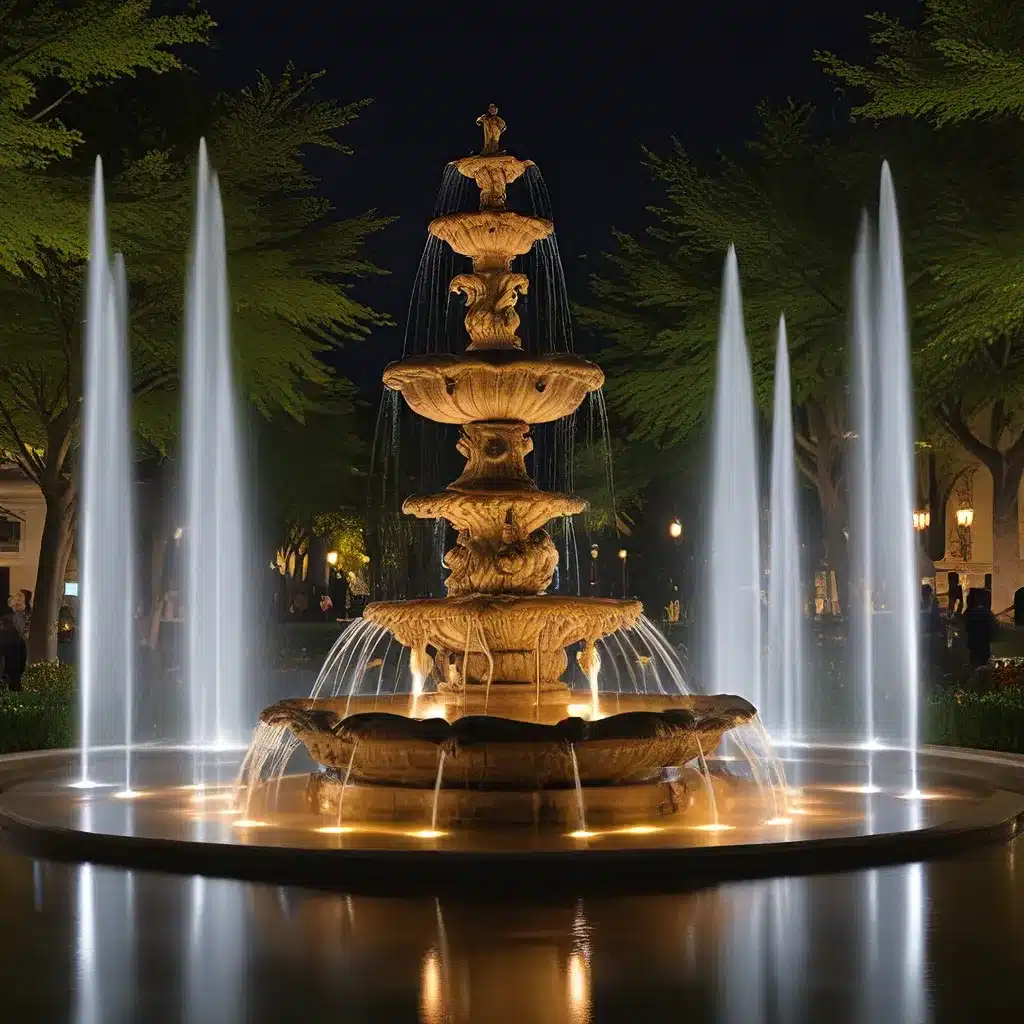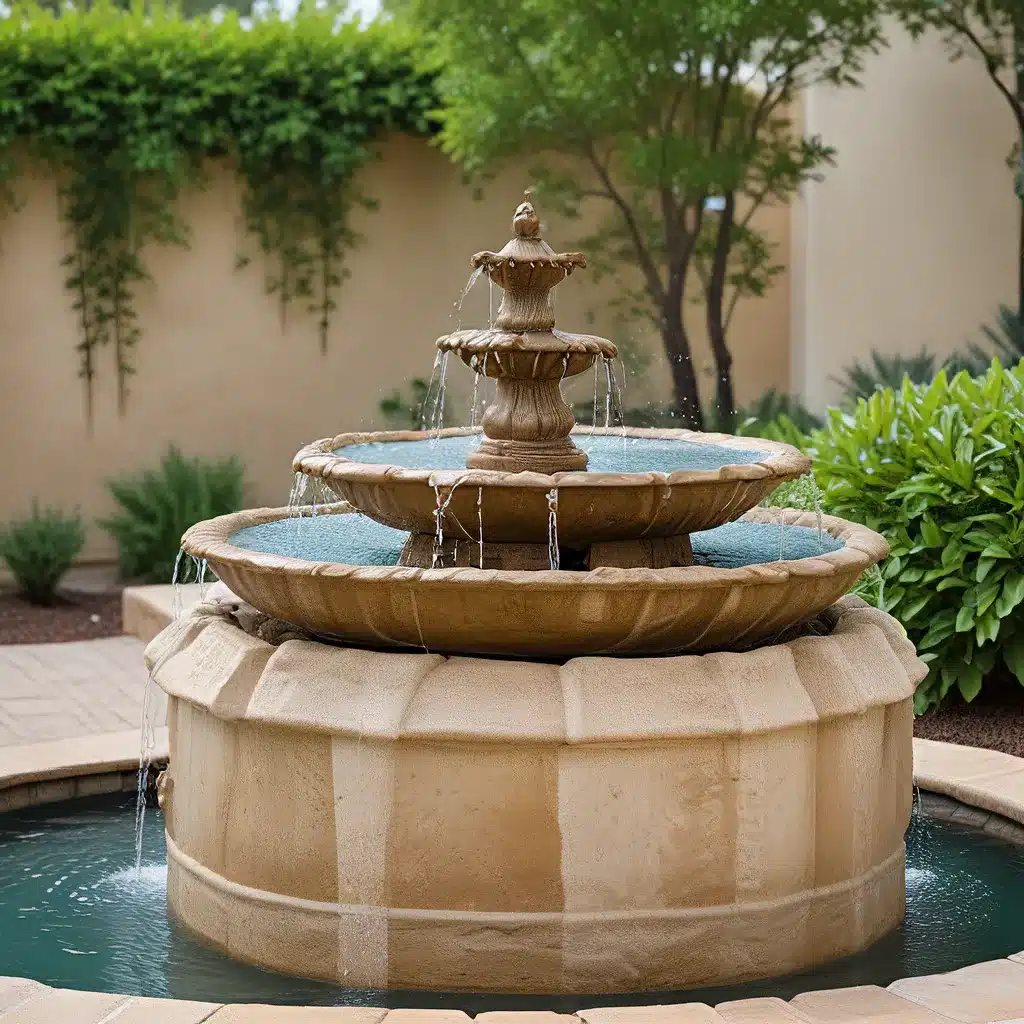
Fountain Design Essentials – Welcome to Fountain Lights
Fountain Design Essentials – Welcome to Fountain Lights

Oh, the woes of the humble fountain enthusiast! You know the struggle all too well – your once majestic water feature has turned into a disappointing dribble, leaving you with nothing but a sad puddle and a deep sense of fountain-based disappointment. But fear not, my friends, for I come bearing the secrets to mastering water pressure regulation and reclaiming the glory of your backyard oasis.
As someone who’s been on a lifelong quest to perfect the art of fountain design, I’ve learned a thing or two about the delicate balance of water flow. It’s like a dance – get the pressure just right, and you’ll be rewarded with a mesmerizing display that leaves your guests in awe. But get it wrong, and you might as well be trying to make a soufflé in a windstorm.
Now, I know what you’re thinking – “But Will, I’m no fountain expert! How am I supposed to become a master of water pressure regulation?” Well, my dear reader, you’re in luck, because I’m about to take you on a journey that will have your fountains flowing like a dream.
First and foremost, let’s talk about the importance of understanding your water source. Whether you’re pulling from a municipal supply or a private well, the pressure and flow rate can make all the difference in how your fountain performs. It’s like trying to fill a bathtub with a garden hose – it just ain’t gonna work, no matter how hard you try.
To get started, you’ll want to grab a water pressure gauge and take some measurements. Measure the pressure at the point where the water enters your property, and then again at the location of your fountain. This will give you a good sense of how much pressure you’re working with and where any potential issues might be lurking.
If the pressure at the fountain is significantly lower than at the main supply, you’re going to need to take some steps to boost the flow. This could mean upgrading your plumbing, installing a water pressure booster pump, or even exploring the option of a dedicated water storage tank. Trust me, it’s worth the investment to ensure your fountain is living its best life.
But pressure is only half the battle, my friends. You also need to consider the water demands of your fountain design. Some features, like towering jets or intricate cascades, require significantly more flow than a simple bubbling basin. And if you’re not careful, you could end up with a fountain that’s more akin to a leaky faucet than a grand water display.
To strike the perfect balance, you’ll want to consult with a fountain design expert or do some careful calculations on your own. Figure out the minimum flow rate required to power your fountain’s various elements, and then make sure your water source can keep up. It’s all about finding that sweet spot where the water pressure and your design are in perfect harmony.
Now, let’s talk about the art of pressure regulation. This is where the real magic happens, my friends. By carefully controlling the water pressure, you can achieve a level of nuance and sophistication in your fountain’s performance that will leave your neighbors green with envy.
One of the best tools in your arsenal is the adjustable flow control valve. These nifty little devices allow you to fine-tune the water pressure at specific points in your fountain’s plumbing system, ensuring that each element is getting just the right amount of flow. It’s like having a personal conductor for your aquatic symphony.
Fountain lights are another key component in the pressure regulation equation. By strategically placing lights within your fountain, you can create a mesmerizing interplay of light and water, amplifying the visual impact of your water feature. And with the right pressure control, you can ensure that the lighting and water flow are perfectly synchronized, creating a truly captivating display.
But we’re not done yet, my friends. For the true fountain aficionados out there, pressure sensors and automatic adjustments are where it’s at. These high-tech systems continuously monitor the water pressure and make real-time adjustments to keep your fountain running at peak performance. It’s like having a personal fountain butler, ensuring that your water feature is always looking its best.
Now, I know what you’re thinking – “But Will, that all sounds very complicated and expensive!” And you’d be right, to a certain extent. Mastering the art of water pressure regulation does require a bit of investment and know-how. But trust me, the payoff is well worth it.
Imagine it – a fountain that dances and sways, its water arching gracefully through the air, perfectly illuminated by strategically placed lights. A fountain that captivates your guests and leaves them wondering, “How on earth did they do that?” That, my friends, is the power of water pressure regulation.
And let me tell you, the benefits go far beyond just the aesthetic appeal. Proper water pressure control can also extend the lifespan of your fountain, reducing wear and tear on the pumps and plumbing. It can even help conserve water by ensuring that every drop is being used effectively.
So, are you ready to take your fountain game to the next level? Grab your water pressure gauge, start researching adjustable flow control valves, and get ready to become the fountain whisperer of your neighborhood. Trust me, your guests (and your wallet) will thank you.
Share to :
Subscribe to our newsletter for the latest in fountain design, innovative lighting ideas, and exclusive tips straight to your inbox. Join the community shaping the future of water features.

Rapid delivery to your doorstep.

Excellence in every product.

Great value for your investment.

Assistance at any hour.
Fountain Lights — Illuminating creativity in every splash!
Copyright © 2023. All Right Reserved